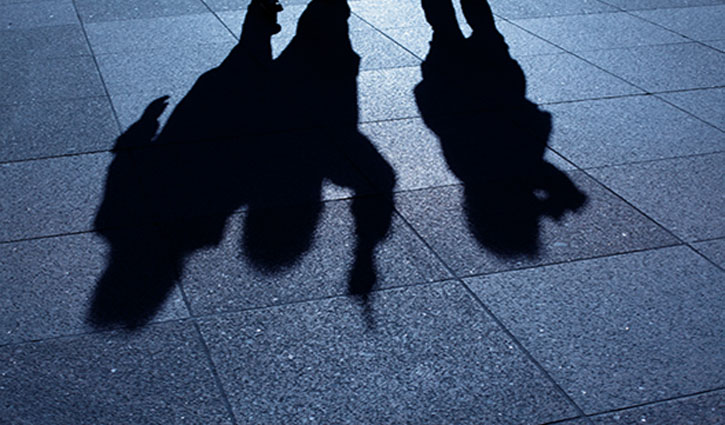The psychological consequences of gang affiliation and violence
T. Mahmud || risingbd.com

We’ve all heard stories about gang violence/affiliation, right? We found out about a stabbing that took place in our own neighbourhood not too long ago... and now, we come to know that an old classmate from middle school joined one of the most dangerous gangs in the city.
The rise in murder, violence, theft, drug abuse, and incarceration due to gang involvement makes it very difficult for us to see the more human side of these individuals. It’s so easy for us to despise or look down upon them, but many of us aren’t, in fact, aware of how psychologically damaged a lot of these gang members end up becoming.
Several studies have shown that gang members typically suffer from anxiety and depression. Adolescents who are involved in gangs, in particular, tend to become more anxious if they keep on getting exposed to more violence. A lack of parental awareness also plays a role in increased anxiety among adolescent gang members. The latter perceive this lack of awareness/ignorance as receiving little social support. This lack of social support further leads the gang members to develop more intrusive and disturbing thoughts, which then results in experiencing anxiety and depression. The youths are especially more vulnerable towards having mental disorders if they end up joining gangs, according to Chris Melde, an associate professor of criminal justice at Michigan State University.
In a survey conducted by him and Adam Watkins from Bowling Green State University, they found that middle and high school students who joined gangs had higher levels of depression and suicidal thoughts compared to students who were not gang members. For whatever reason the youth join gangs (ex. Escaping from hardship or having a sense of belonging), their problems tend to worsen after they become gang members.
Post-traumatic stress disorder (PTSD) is also quite common among gang members. This makes sense as PTSD typically occurs after being exposed to violence, which is one of the bigger factors that can lead someone to have this disorder. Epidemiological surveys have, in fact, suggested that 15-24% of individuals would risk developing PTSD if they were exposed to violence. Being a gang member makes someone both a perpetrator and victim. What is meant by that is this individual is expected to commit acts of violence against others, since violence is a foundation of the gang lifestyle.
Gang members are constantly fearing for their lives and safety, since they don’t want to get attacked by rival gang members or get caught by the authorities. They’re also exposing themselves to assaults and murder on a regular basis. With that said, it’s not really surprising to see that they’re more susceptible towards having PTSD than other people.
Gang members are prone to suffer from other issues that can negatively impact the quality of their life. They have higher rates of psychosis, alcohol dependence, and antisocial personality disorder, for instance. Psychosis basically refers to a variety of mental health issues that make a person lose in touch with reality (ex. Having hallucinations or delusions). Psychosis among gang members is often a product of violent victimisation, fear of further victimisation, and having persistent thoughts about violence. When it comes to alcohol dependence, gang members are more likely to engage in alcohol-related physical assault, drug selling, peer drinking, and witness drug dealings in their neighbourhood. Research has shown that early alcohol abuse is associated with an individual more likely to join a gang. Drinking also plays a role in the social aspect of the gang life. Gang members engage in drinking in order to maintain the social solidarity/cohesion of the group. Finally, antisocial personality disorder is another predictor of gang involvement. Individuals with this disorder tend to be more rash and they give little importance to what others think about them. As a result, they experience exclusion from school/work and struggle to form friendships with others due to their difficult and disagreeable nature. Researchers theorised that some people join gangs because they are looking for companionship with those who share similar values and personality traits. This may be their way of making friends and having a sense of belonging.
In conclusion, gang involvement doesn’t just affect non-gang members on a psychological level. Rather, gang members themselves struggle with various psychological/mental health issues that a lot of us can’t fathom initially. Just like how we fear for our safety and wellbeing, it’s the same for these individuals (despite them being the ones who perpetrate the attacks). Even though this phenomenon is a grave matter, there are ways in which gang violence and affiliation can be reduced. For example, strengthening relationships with parents, mentoring, and anti-bullying programs have shown to be effective in tackling this problem. The entire community should, therefore, not only play an active role in preventing gang violence and affiliation, but to also provide support for these marginalised individuals. The factors that lead one to join a gang (ex. Child neglect and abandonment) also need to be addressed in order to help bring about change.
About the writer: T. Mahmud completed her high school education in Dhaka. She received her Bachelor’s of Arts in Psychology at Simmons University, USA. She is currently enrolled in UCL’s (University College London) Special and Inclusive Education masters program.
Dhaka/Mukul























